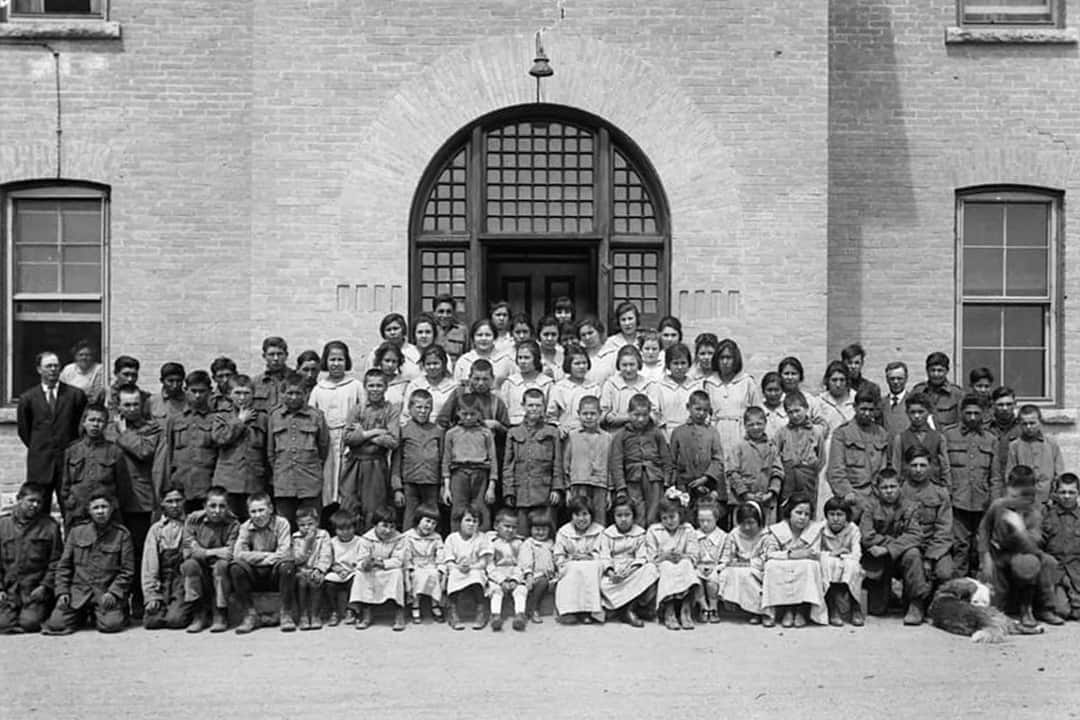Content warning: This article contains descriptions of sexual violence, physical violence, and substance abuse.
In Indigenous Writes: A Guide to First Nations, Métis and Inuit Issues in Canada, Chelsea Vowel, a Métis writer and educator, stated, “I never attended residential school. My experiences are all secondhand. Mine is the first generation to be schooled entirely outside of that system, and yet I cannot think of any Indigenous peoples of my generation who have not been touched by it, one way or another.” In this quote, Vowel painfully conveys the generational trauma caused by Canada’s residential school system.
Over the 150 years that residential schools in Canada operated, 150,000 children attended and over 6,000 children died. Despite this, many Canadians are still unaware of the atrocities that took place in residential schools and how that trauma continues to affect Indigenous peoples and communities today.
This is why improving the way students learn about the residential school system at every level of education is critical to enhancing Canadian understanding of the residential school system, and thus allowing us to work toward reconciliation.
There’s no question that the residential school system is a very dark part of Canadian history. There are numerous accounts of staff physically and sexually abusing Indigenous children in residential schools. The fact that children’s burial sites are frequently being discovered at former residential schools speaks volumes about the atrocities that took place at these so-called schools. It only takes reading one survivor’s story to realize that these children were not only stripped of their identity and culture, but were also dehumanized.
These detailed, personal accounts portray residential schools in a truthful light, showing how horrendous and inhumane they really were. What’s worse is that the impact of the residential school system does not stop with survivors; it invariably impacts their children and the communities they are a part of.
The reality is that the injustices of the past will never be healed until Canadians learn the details of what happened, understand the lasting impact, and know that reconciliation is necessary.
Although most Canadians are aware of the residential school system, few understand the immense impact it has had on Indigenous communities. The final report from Canada’s Truth and Reconciliation Commission stated that true reconciliation won’t be possible unless the public understands, acknowledges, and addresses the impacts of residential schools.
Given this, how do we properly teach about this dark side of history? I look to my own experience to answer this question.
While I knew about residential schools from my public education, I did not fully understand the horrors until I read first-hand experiences. The personal stories give a perspective that most Canadians who rely on knowledge from the media and outdated education do not have.
Within the current Canadian education system, it should be mandatory for students to read these stories, while also learning how the residential school system changed the way that Indigenous children perceived their self-worth as Indigenous peoples and the generational impact of this trauma. Furthermore, students must also learn about the harmful policies affecting Indigenous peoples that are still in place today.
This approach would not only teach Canadians about the horrors that took place in residential schools, but also explanations of how the system has led to current inequities in education, health, and much more. It is with this understanding that people may start to see some of the challenges that Indigenous communities face due to the systemic damage done by residential schools.
For example, substance abuse disorders are a common issue with which Indigenous communities struggle. Theories of addiction put forward that individuals with addiction develop their problems with substance abuse because it helps alleviate the pain that comes with trauma. Properly studying the history of the residential school system and understanding the lasting effects it has had on Indigenous communities allows problems such as substance abuse disorders in those communities to be both understood and addressed better.
If the history and current impact of residential schools were better taught in schools, it would help Canadians understand why the legacy of residential schools is still present in political and legal policies today. Furthermore, it would also help Canadians understand that systemic discrimination still exists and is reflected in issues like the disproportionate amount of Indigenous children in the child welfare system.
I believe that reconciliation can only happen if enough people agree that it is our obligation as a society to make it happen. As expressed in the final report of the Truth and Reconciliation Commission, residential schools cannot be understood as simply history; all Canadians must understand the lasting effects of the residential school system and how the trauma from it still impacts Indigenous communities today.
Erin Lunn is a first-year social sciences student at Innis College.


